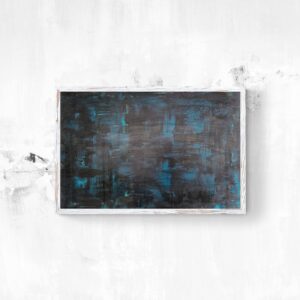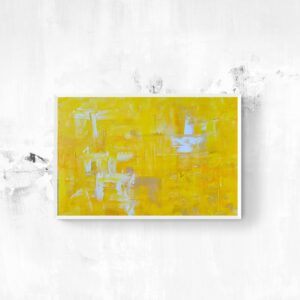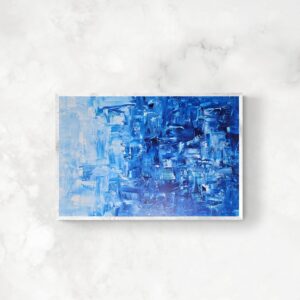
Anytime the word “discover” is used without irony these days, it’s worth pausing to consider why something is being framed that way. When I visited Casa Susanna at the Metropolitan Museum of Art, it was noticeable there in the first sentence of the exhibition’s introductory wall text.
I can’t remember exactly when I learned about the photos that make up Casa Susanna. It must have been sometime after the first book about them was published. The story is that Michael Hurst and Robert Swope, a couple who ran an antique and design shop in Manhattan for many years before retiring to Mexico, were at the 26th Street Flea Market in New York City in 2004 and came across over 300 photographs from two Catskills getaways, one of which shares the name of the show. The resorts provided space and opportunity for people to explore their gender in ways they couldn’t in their everyday lives. Both were owned at different times by Susanna Valenti, whose name graced one of them, and her wife, Marie Tonell. Today, many people in those images would likely identify as trans women, and some did go on to identify that way. Yet among this 1950s and ’60s cohort, they referred to the thing that drew them to the relative privacy of these refuges as “cross-dressing.” In 2005, Hurst and Swope published the photos in a book with no accompanying text, leaving the story of the images and people largely up to conjecture. That same year, artist Cindy Sherman purchased over 200 separate photos of the same getaways from a New York flea market (potentially the same one frequented by Hurst and Swope), adding them to her personal collection of source materials. She went on to display several in a 2016 exhibition in New Zealand, and some appear in the current Met show.

After the first book was published, into the 2010s, others started to take an interest in the photos, this time delving into the stories and lives they portray. In the spring of 2014, Harvey Fierstein opened a Broadway musical called Casa Valentina, inspired by the images. Later that year, another book was published to accompany a gallery show, followed by an auction of the photographs. And that fall, the first season of the Amazon Prime show Transparent, created by Joey Soloway, incorporated a storyline in which the main character, a trans woman, attends a retreat inspired by Casa Susanna. Soon after, the Art Gallery of Ontario (AGO) acquired Hurst and Swope’s snapshots and included them in the 2016 exhibition Outsiders: American Photography and Film, 1950–1980s, co-curated by Sophie Hackett (who also co-curated the show at The Met). It was with that AGO show that the context of the photos began to publicly emerge.
A recent documentary by Sébastien Lifshitz, made in collaboration with photo historian and Casa Susanna co-curator Isabelle Bonnet, is available to stream on the PBS website. The film includes interviews with women who visited the retreat, as well as Marie Tonell’s grandson, who played on the property as a child and more than once snuck in to watch the cabarets that guests put on. Today, we know the names of those pictured, along with information about their lives and livelihoods, the pressures and joys they experienced, and humanizing details — for instance, who among them bent the rules against posing in swimsuits. There is also an excellent book by Hackett and Bonnet, with an introduction by historian Susan Stryker, published to accompany the two prior iterations of the current exhibition. And yet there’s still that word, “discovered.”

Let me say that the exhibition is good. The curators deserve praise for the research and care they put into organizing it and ensuring that the images and people are presented with depth and humanity. The show offers insight into the camera’s role in self-fashioning, as well as useful perspective on why trans people in the mid-20th century would prefer Polaroids and self-developing their photographs over the risk of bringing them to a lab.
But the idea of discovery persists in so much cultural production around these images. It’s a bitter thing when a society that casts a group out later claims to have discovered that same group and their survival strategies. I’m not saying this to cast aspersions at anyone who has worked with these images over the years — particularly those who have put extraordinary effort into elucidating the details of what is on display. Instead, I wonder in what new ways we could tell these stories. Maybe we can frame the finding of unfamiliar materials as an invitation that comes with a responsibility toward that unfamiliarity. These places and people were known, just not by everyone. Encountering them for the first time is a chance to learn, to consider why it was necessary to limit access to places like Casa Susanna, and why someone’s precious objects, the record of their life and the communities they fostered, might end up at a flea market instead of cherished by their loved ones. These questions bring to mind other examples of photos held and controlled by people who have no connection or a tarnished relationship to the subjects.

“Discovery” also implies that there is nothing like these places anywhere else. While it’s absolutely true that much about the worlds captured in these photos is unique, as someone who has spent over a decade volunteering at a community-run lesbian archive, I assure you that finding one or two examples usually indicates that similar survival strategies were at play in countless homes, furtive spaces, and unexpected venues.
With that in mind, I encourage you to both see this show and learn more about the ever-growing number of trans-led archives that are working to compile and tell these stories. Here are just a handful to look into: The recently founded NYC Trans Archives; the Louise Lawrence Transgender Archive; the Digital Transgender Archive; the Black Trans Archive; the trans-led Archivo Cubanecuir; and El Archivo de Memoria Trans in Argentina. As exciting as it is to see snapshots of this specific community on the walls of one of the world’s leading museums, it’s just a tiny taste of the vast and long-standing history of trans people around the globe.








Casa Susanna continues at The Metropolitan Museum of Art (1000 5th Avenue, Upper East Side, Manhattan) through January 25, 2026. The exhibition was curated by Isabelle Bonnet, Sophie Hackett, and Mia Fineman.





